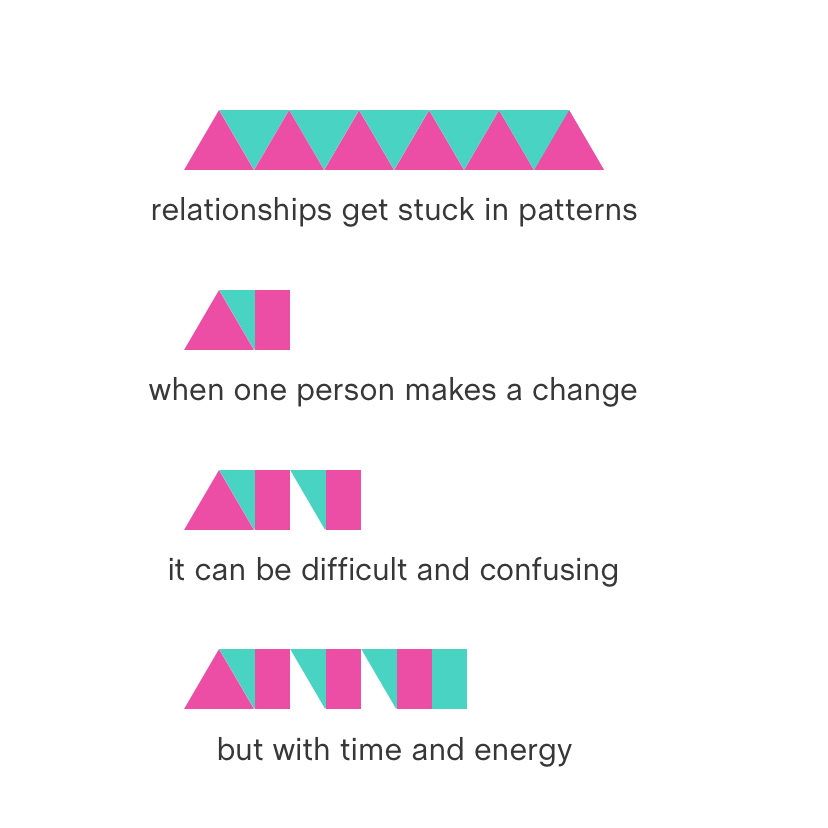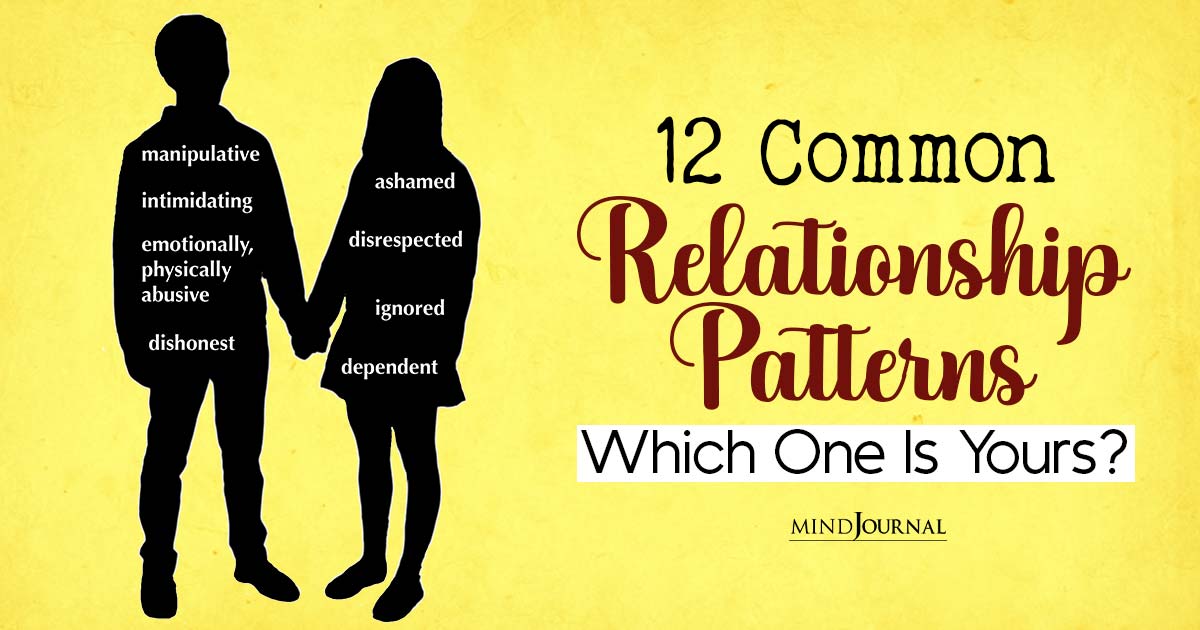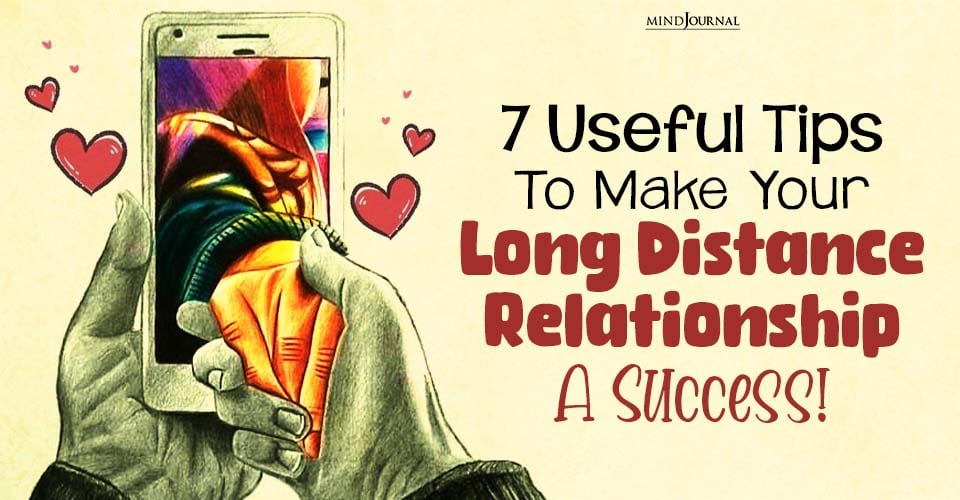Ever noticed how you and your partner have those regular ways of interacting? They’re called relationship patterns. Guess what? Understanding it is also a helpful to reconnect with your partner!
Relationships, while often blooming with love and joy, can also harbor areas of conflict that, when triggered, lead to misunderstandings and tension.
Perhaps one partner desires constant updates on the other’s whereabouts, while the other thrives in digital solitude, leading to disputes over smartphone apps.
Recent research delves into the concept of “relationship pattern labeling” (RPL), unveiling an approach to enhance relationship well-being, potentially impacting both emotional and physical health.
Read more here: 9 Conflict Patterns That Damage Relationships
What Are Relationship Patterns?
Relationship patterns involve repeating familiar behaviors with different individuals we encounter in our lives. These patterns, present in various relationships like romance, friendship, and work, have both positive and negative impacts.

They influence three fundamental aspects: the type of individuals we choose to engage with, the way we interact with them during the relationship, and the boundaries we establish regarding their treatment of us.
These patterns shape our partner selection, interaction dynamics, and our self-worth within the relationships we cultivate.
Understanding and assessing these patterns can empower us to make conscious choices, promote healthier interactions, and foster more fulfilling relationships across different areas of our lives.
Read more here: How to Avoid the Pursuer-Distancer Pattern in Your Relationship
12 Examples of Relationship Patterns
Ever wondered which out of the 12 basic patterns that fits you and your partner? Turns out, identifying relationship patterns could actually bring you closer. Want to give it a shot and boost your intimacy?
Now, let’s delve into the 12 intriguing identifying relationship patterns in the study:
- Cactus/Fern Dynamic: In this relationship, one partner thrives on emotional closeness while the other values their personal space and privacy. It’s a dance between seeking connection and respecting boundaries.
- Introvert/Extrovert Harmony: The introvert/extrovert duo seeks a delicate equilibrium between solitude and social engagement. Balancing the need for quiet introspection with the desire for vibrant interactions shapes the rhythm of this partnership.
- Approach/Withdraw Interplay: Here, one partner yearns for emotional connection while the other occasionally feels overwhelmed and seeks distance. Navigating the ebb and flow of intimacy versus autonomy becomes the essence of their relationship.
- Emotional/Logical Nexus: This pair finds its foundation in contrasting approaches. One partner operates from the heart, driven by emotions, while the other emphasizes logical reasoning. The interplay between feelings and rationality paints their relational canvas.
- Mutual Avoidance Nexus: Partners entwined in this pattern evade addressing issues head-on, preferring to steer clear of potentially difficult conversations. It’s a dance of dodging, where issues often remain in the shadows.
- Criticize/Defend Dance: Regular criticism from one partner triggers a reflexive self-defense mechanism in the other. This push-and-pull dynamic tests communication and vulnerability in the relationship.
- Mutual Blame Balancing Act: The mutual blame dynamic involves both partners pointing fingers at each other when problems arise. This intricate dance explores accountability and the shifting sands of responsibility.
- Mountains/Molehills Interplay: In this relationship, one partner tends to magnify issues while the other downplays them. The challenge lies in finding a shared reality amid differing perspectives on the severity of problems.
- Spender/Saver Confluence: Partners with divergent financial outlooks – one inclined to spend and the other to save – must harmonize their visions for managing resources and achieving shared financial goals.
- Teacher/Student Exchange: Here, one partner naturally assumes an instructional role while the other resists conformity. The journey involves a dance between sharing wisdom and allowing for self-discovery.
- Dreamer/Realist Spectrum: Fantasies and practicality intermingle as one partner dreams big while the other remains grounded in reality. Bridging these aspirations with achievable plans becomes pivotal.
- Conventional/Unconventional Fusion: This duo balances stability and adventure. One partner seeks day-to-day predictability while the other embraces the unconventional, resulting in a journey filled with both comfort and excitement.
Every relationship boasts its own unique blend of patterns, which shape interactions and experiences. Acknowledging and labeling these patterns empowers couples to understand, communicate, and transform their dynamics.
Recognizing and understanding our relationship patterns is essential for personal growth. These patterns aren’t inherently good or bad, but acknowledging their strengths and challenges is crucial. It’s important to communicate openly with those around us about these patterns.
6 ways to cultivate self-love and change negative relationship patterns:
- Mirror Positivity: Treat yourself as you would a friend—acknowledge strengths and forgive flaws.
- Learn from Patterns: Reflect on past relationships to spot negative trends and actively work on breaking them.
- Prioritize Self-Care: Regularly engage in activities that boost your mood and well-being.
- Set Boundaries: Clearly communicate your needs and limits in relationships to foster healthier dynamics.
- Positive Affirmations: Replace self-criticism with kind self-talk to nurture a foundation of self-love.
- Seek Growth, Not Perfection: Embrace personal growth over striving for perfection, allowing room for mistakes and learning in your journey to healthier relationships and self-love.
Read more here: What Is An Inter-Intimate Relationship? 5 Signs To Know If You Are In One
Now that you have understood the relationship patterns psychology, tell us which one you relate to in the comments below!
Frequently Asked Questions (FAQs)
What are relationship patterns?
They are consistent behaviors and reactions that shape how we interact with others.
Why do people repeat relationship patterns?
People often repeat relationship patterns due to familiarity, comfort, or attempts to heal past experiences.
How do you recognize chronic patterns in relationships?
Identifying relationship patterns become evident through recurring issues, reactions, and outcomes over time.










Leave a Reply